The new, big, scary technology of our industry? Artificial intelligence. Everyone’s talking about it, how to leverage it, and if it’s going to take our jobs or enhance it.
Whatever your opinion is, it’s best to get to know the enemy.
In the past year, I’ve spent hundreds of hours scanning Reddit threads, reading articles and talking to other PRs and AI enthusiasts about how we can use AI in our everyday work. Below you’ll find a list of 27 real-life examples of what we can use it for, and even better, they’re pretty ethical!
This article is a guest contribution from Iona Townsley, founder of Heroine.
What Is AI, and How Is It Being Used in Other Industries?
AI is a huge buzzword at the moment. Everyone is talking about it, and when your dad brings it up at the dinner table, that’s how you know it’s gone mainstream. AI stands for artificial intelligence. It’s defined by the use of machine intelligence as opposed to natural intelligence found in humans and animals.
However, many of us don’t realise that AI isn’t new at all. In fact, AI has been used as a popular plot point for science fiction stories for hundreds of years. In 1951, Dean Edmunds and Marvin Minsky built SNARC, the first artificial neural network.
It’s been used ever since to help create tools we use every day, including chatbots found on most websites, film recommendations on our favourite streaming platforms like Netflix and even how Siri and Alexa understand human language.
We’re positively surrounded by AI, whether we know it or not. But now it’s become more popular with millions of people trying out more accessible tools like ChatGPT and DALL-E.
But how can we utilise AI in our digital PR efforts to make us better marketers, produce better quality work and ultimately save time?
The Problem With Using AI Ethically
Although AI has burst onto the scene and been lauded as a great way to improve our processes from sending emails to our bosses to coming up with meme-worthy imagery, it comes riddled with issues.
With all new technology, it’s important to understand its limitations before taking it further and employing it in your day job. Throughout the past couple of years, many ethical issues have reared their head since the popularisation of AI.
Notably, in March, some tech giants like Elon Musk, Steve Wozniak, and Center for Humane Technology’s Tristan Harris signed an open letter calling for a pause in the advancement of AI for the next 6-months to help the world understand it more before it gets out of hand.
Some ethical problems that have arisen from the technology include AI using only the data that it is given. This often leads to the technology using biassed datasets that can disadvantage a group of people.
An example of this is when Amazon tried to use AI as a hiring tool. The Ai they created was taught to look through the resumes of potential candidates and choose who is most qualified for the position. However, where Amazon went wrong is that they gave it a dataset that included primarily male resumes, which means their AI went to discriminate against women.
There are many more examples, from AI image generation tools stealing other artists’ work to Ai chatbots becoming increasingly racist.
In PR, we’re just starting to see the more unethical side. Some people have faked experts completely using AI to respond to journalist requests. This included their responses, the interview questions and even the image of the expert.
Hopefully, the examples I give below are more on the ethical side to make sure we’re on the right side of history as we implement it into our industry.
How to Use AI in Ideation
Before we get into the thick of it, I wanted to write a quick disclaimer for this section. I’ve found AI is useful for the different parts of ideation, such as uncovering unique topics, finding new insights and the like. If you ask it straight up for campaign concepts, you’ll get the same old ideas that have been done a thousand times before regurgitated until the end of time.
Use ChatGPT to Come Up With Brainstorm Icebreakers
Have you ever been in a brainstorm where people just aren’t ready to talk? You’ve presented the brief but no takers? AI can help you quickly come up with some icebreaker options to get everyone in the right headspace to ideate and comfortable enough around each other to start sharing those wacky ideas.
Try: Give me five brainstorm icebreakers to make the participants more creative and comfortable with each other.
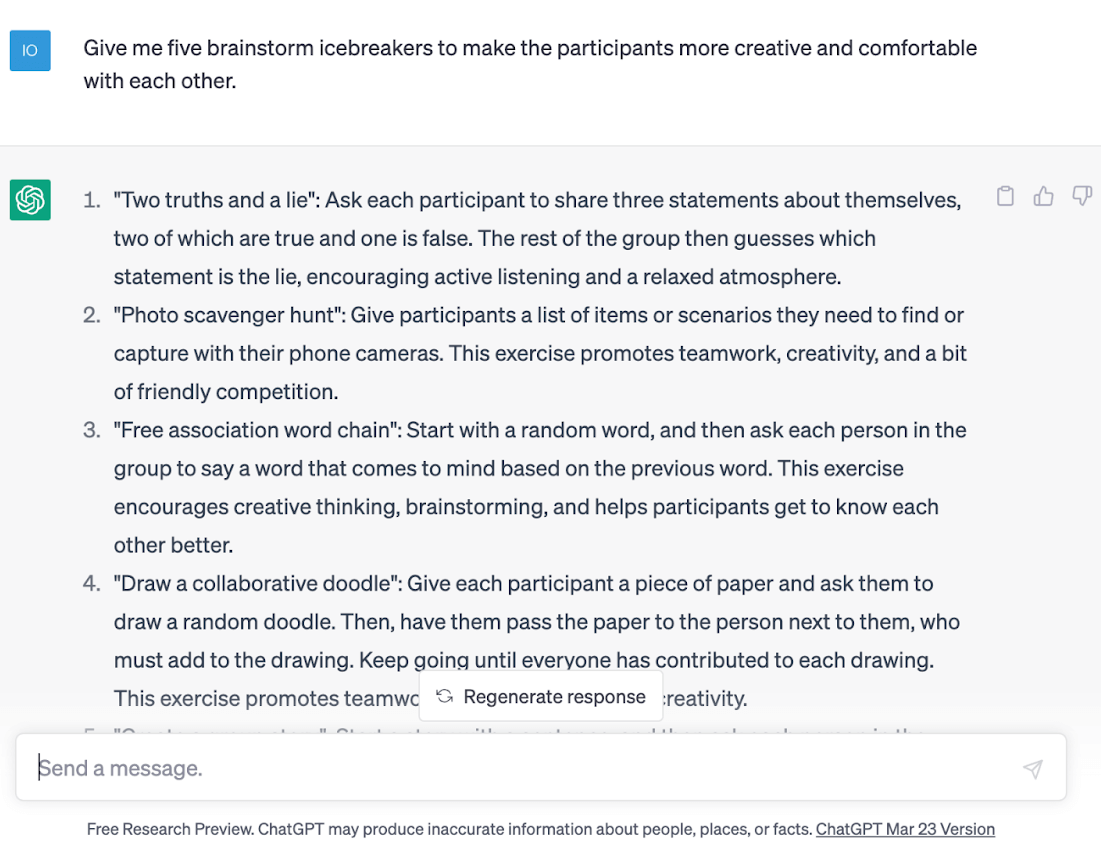
Use ChatGPT to Help Find Surprising Insights
One good way to start coming up with ideas is to fish out useful insights from ChatGPT. Insights are a great starting point for coming up with unique concepts, usually uncovering a surprising truth that gives your campaign the best springboard. A good way to do this is to interview the AI about specific demographics, their pain points, what people use certain products for and more.
Try: List 10 r/showerthoughts about Cadbury’s chocolate.
Use AI as the Topic of the Whole Idea
AI as a topic itself is something journalists absolutely love to cover. We’ve seen stories like Guess the Christmas Movie based on AI’s interpretations, Visit Denmark released a comical video that brought tourist attractions alive with AI, and Heinz showed us that no matter how many times you write ketchup, it’ll come up with Heinz’s own. The one thing to keep in mind is to make sure your story is interesting in its own right. Tagging AI onto the end won’t be its saving grace if the story isn’t strong enough to begin with.
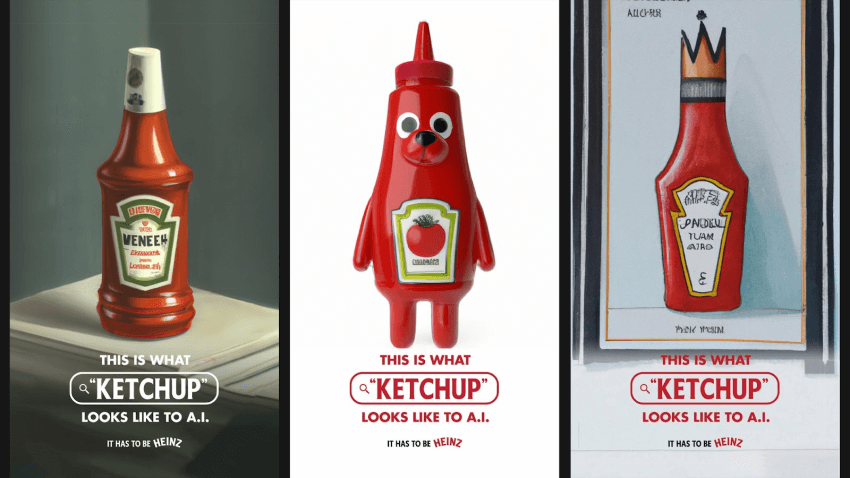
How to Use AI in Research
Depending on who you ask, the research part of creating digital PR campaigns is either loved or loathed. Sometimes our mind’s just don’t work well with numbers, and that’s ok. Even better, now we can ask AI for a little nudge in the right direction, be it analysing datasets or coming up with excel formulas.
Use ChatGPT to Pull Interesting Insights From a Data Set
One of the most useful ways PRs have found to work with ChatGPT is to ask it to analyse a dataset for you, and pull out unique headlines from it. It’s one thing examining a dataset yourself and trying to find patterns, but AI can do this in seconds and find the more unusual angles you might have missed.
Try: Analyse this dataset and give me the top 5 most interesting insights [insert dataset].
Use Fireflies to Transcribe Interviews
While interviews aren’t always the most common strategy in digital PR, they’re becoming slightly more popular. Fireflies is a helpful tool if you’re interviewing a celebrity, CEO or spokesperson. The platform easily transcribes voice conversations so that you don’t have to listen back to them for hours.
Use ChatGPT to Suggest Survey Questions
Creating a survey campaign is much more difficult than it seems. You don’t just send out a couple of questions to a group of people and hope for the best. You have to carefully craft your questions to make sure you’re coming away with something newsworthy. ChatGPT can help you uncover these questions and fill in any missing gaps.
Try: I want to find out how many people use subtitles. What survey questions can I ask to get interesting results?

Use ChatGPT to Explain a Difficult Topic Like You’re 5
One of the best ways to use ChatGPT if you have a client in a particularly difficult niche to understand (did someone say crypto?) is to put in an article, service or web page and ask it to explain it to you like you’re five years old. It’ll then simplify the content for you and help you understand it better. I find changing the age range is helpful to not make the explanation too reductive.
Try: Can you explain this to me like I’m 5 years old? [Insert article, research paper, etc].
Use Elicit to Find and Ask Questions About Research Papers
An AI tool that may never have heard of before is Elicit. Now, we’re not students who have to write a dissertation or a scientist who needs to break down past research papers, but we are sometimes data analysts and we tell stories. Elicit helps you search and understand research papers to help with methodologies, ideation and research.
Use ChatGPT to Write Excel Formulas
If you’re like me, excel formulas are not your language of choice. Sure, I can do a VLOOKUP and it’s a point of great pride for me, but anything a bit more sophisticated and I’m at a loss, until now. Ask ChatGPT exactly what you want to do in Excel or how you want to speed up a specific process and it’ll more than happily oblige.
Try: What is the excel formula to turn text into a capitalised headline?
How to Use AI in Production and Design
AI has come on leaps and bounds, improving at an impossible rate even in just the past few months. You can now use AI within the production of your campaigns to come up with incredible visuals or just help you explain the visuals you want to create. It’s best not to get AI to do what a human could be paid for instead, but sometimes our budgets are tight and we want to try something a little more ambitious.
Use Midjourney to Generate Proof of Concepts
Do you have a cool creative idea that you want to pursue but you think it’s too risky? Not sure how it’ll end up looking even after all your hard work and spending a fortune on designers? Well, Midjourney is here to help. You can generate super quick and easy concept designs for your idea which will make it much easier for you to pitch to your client or manager. Check out these superhero-inspired Nike trainers as an example.

Use Pictory to Create Engaging Videos for Your Campaigns
Often publishers create their own videos alongside articles so that they get more engagement and can be pushed on social media. We can now help journalists by creating our own videos for our campaigns in minutes. Pictory is super easy to use and makes campaign videos from scratch.
Use Dall-E to Generate Additional Mock-up Options
Like stock photos, the mock-ups online tend to all be the same. We know instantly if a brand hasn’t actually bought a billboard because we’ve seen the same brick wall under an underpass a million times before. DALL-E can help you generate new mockup options from billboards to business cards.
Use Murf to Create Human-Sounding Voiceovers
If you’re creating a video for your campaign, finding the voice that will represent your story and the brand can seem impossible. Murf creates voiceovers that sound like a real human. Need the voice of an elderly Irish lady who has smoked six packets of cigs since she was 14? Done and done.
Use Dall-E to Generate Mood Boards for Campaigns
Moodboards can be one of the hardest parts of creating a large creative in PR. We want to make sure that we have a consistent and strong style for the video or advert we’re creating, but it can be hard to manually search Google for the perfect images. Now with DALL-E, we can generate almost any image that we need to. Need a green elephant flying through a thunderstorm (don’t know why you would)? BAM! It’s there.
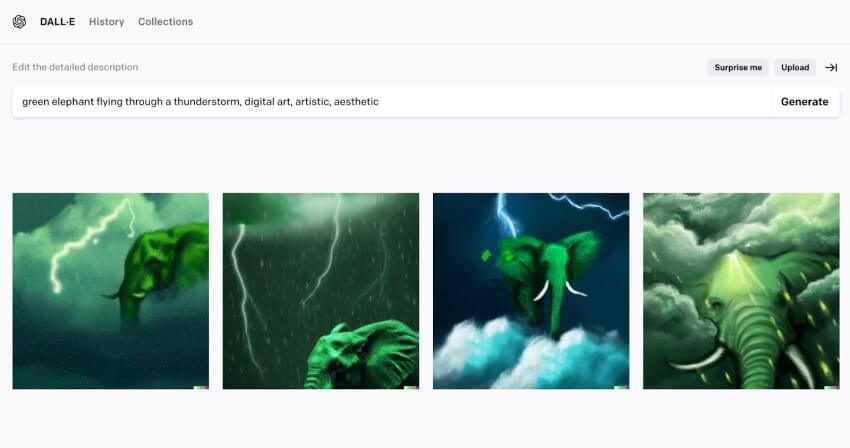
Use Soundraw to Create Music for Your Videos
More video content! We know video is a relatively popular format in digital PR campaigns and more often than not you want to add music, but you can’t use all the great trackers without being sued and the stock options just sound bland. Use Soundraw to create your own AI music.
Use Podcastle to Create Studio-Quality Recordings
Now what if you have the perfect person for the voiceover but you don’t have the equipment to make them sound their best? Podcastle is a tool that helps you create studio-quality recordings whether you’re looking for a voiceover for your campaign video or want to make your training session sound that much better.
How to Use AI in Pitching and Prospecting
Pitching journalists is such a human element or PR. You’re trying to build powerful relationships with the people you’re speaking to, so keeping your content as human as possible is encouraged. AI can give you the building blocks to help you create engaging copy, which you should then go on to refine.
Use Distinctly’s Headline Grabber to Write Concise Subject Lines Based on Your Campaign
I’m always here for PR agencies creating their own unique tools using AI to help the rest of us out. Distinctly made a super useful tool called the Headline Grabber in which you input your story, the headline style and sentiment and it gives you five starter headlines for you to use. Helpful!
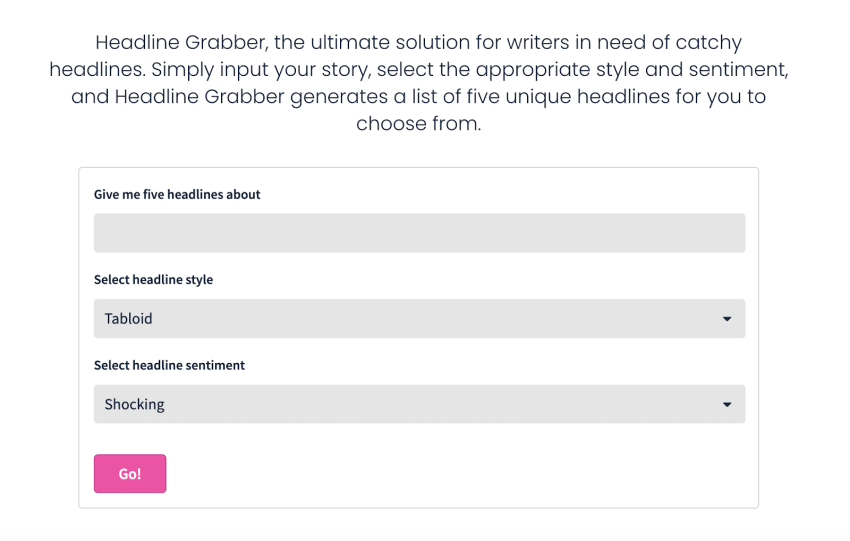
Use ChatGPT to Find Journalists That Write About a Specific Beat
Finding journalists at the prospecting stage of a campaign takes up an incredible amount of time. To give you a good starting point you can use ChatGPT to find some initial journalists in the topic you’re covering. Be warned though. Their data only goes up to September 2021 and you should always double-check the journalists before sending a pitch as there are a few anomalies. ChatGPT has been known to lie (also known as ‘hallucinating’).
Try: Find 10 UK staff writers that write about international travel trends for national online publications.
Use ChatGPT to Analyse the Sentiment of a Piece of Coverage
As PRs, it’s important to not only get coverage in the news but also find out how our brand is being talked about, or the sentiment behind the campaign we’re promoting. Using ChatGPT you can ask it to tell you the sentiment behind articles you’ve secured, allowing you to pivot pitches and report back to your client.
Try: What is the tone and general sentiment behind this article?
Use Midjourney to Create Engaging Header Images
In all PR pitches, you should be including an image for the journalist to use, even if it’s just a simple one-off photo to support the story. For years we’ve used stock photos for this, but the issue is everyone is using the same ones, and we’re getting stock photo fatigue. Here you can ask Midjourney to create a scene for you to exactly describe your story. Even if they don’t use it in their article, it’ll still stand out more in a journalist’s email inbox than the same moody cityscape of London.
How to Use AI in Everyday Processes
One of AI’s biggest strengths is its ability to save the user time in tasks that often take up huge chunks of the day. While not everything can be automated, AI can help you speed along the processes you spend too much time on, from writing update emails to cutting out background noise on video calls.
Use Jasper to Write Quick Emails to Clients and Colleagues
Writing emails takes up an unnecessary amount of time, especially when you’re trying to convey something that isn’t an easy yes or no. Jasper helps you write emails in seconds, whether it’s a reply to a client that you need a polite way of saying no, or telling your boss that you’re absolutely stacked right now and couldn’t possibly take on any additional work.
Use Beautiful.ai to Create Beautiful Slide Decks
Are you always jealous of seeing other agency slides decks with all the bells and whistles? With Beautiful.ai, you can use AI to create gorgeous slide decks, whether to present a report, new ideas or touch on agency processes. You don’t need to be design savvy or have an entire branding doc to hand.
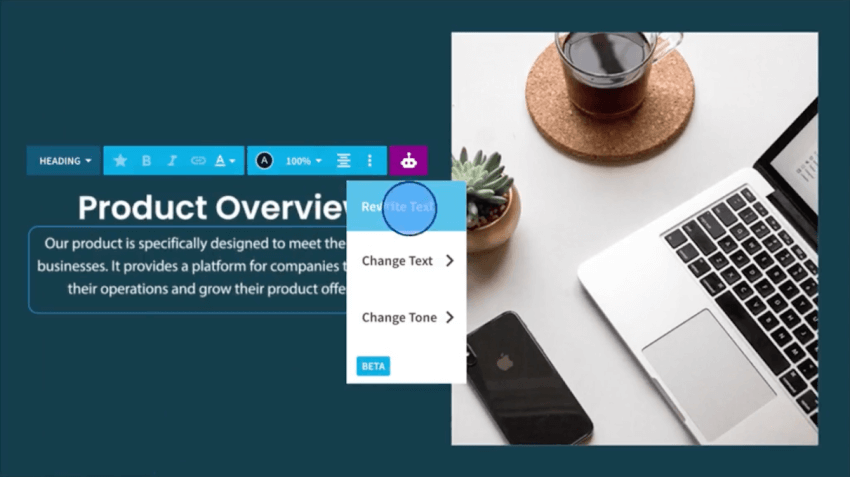
Use Fireflies to Transcribe Meetings Instantly
Writing notes from a meeting is hard if you don’t have someone dedicated to it. You start to lose track of what’s being said, and key points are missed. Often if you record said meeting it also takes up an extraordinary amount of time to scroll through an hour of footage to find what you need. That’s why Fireflies is super helpful to transcribe your meetings as you’re having them so you can revisit important points as and when you need them.
Use Grammarly to Check Your Grammar and Tone
Grammarly is already used by millions of people, but some don’t know that they actually use AI to power it. They have a really useful extension which can help you check the grammar and tone of any writing you’re doing. Perfect if you happen to miss the odd typo.
Use Krisp to Remove Any Background Noise From Remote Meetings
One of the biggest frustrations of having meetings from home is that you often can’t control the noise around you, from doorbells, barking dogs and even construction. Krisp removes any of this unwanted sound in real time so you can continue sounding professional.
Use Notion to Organise Your Entire Life
I’m an absolute Notion convert. I wish I could say I’m paid to write this but unfortunately, I’m just a diehard fangirl at this point. Notion is a great tool to keep everything you need together from your to-do list, agency information, policies and client documents. The reason I’m mentioning it here is because they now have a built-in AI system that makes it 100 times easier to do almost every task you can imagine.

Use Presenter Coach to Help You Become a Better Speaker
You’re probably thinking that you don’t do a conference every day, why do you need to learn to be a better speaker? I bet you’re often on calls with clients, your manager or contractors. Being a better speaker and presenting won’t just help you in industry conferences if you choose to do them, but also pitching new ideas, selling new services and presenting reports.
Limitations of AI
Although AI is one of the most useful technological developments of the past 20 years, it also comes with its limitations which we’ve touched upon above. These limitations are important to note before we start phasing it into our workflow.
AI Can Be Expensive to Use
At the moment, we’ve been blessed with lots of free tools to help us use AI in our work. These tools are generally free to use, but we’re already seeing the companies that own them start to implement paid packages. It’s important to keep in mind that it’s unlikely a lot of these will stay free forever, and once we’re dependent on them, the companies can charge what they like.
AI Can Be Time-Consuming
Although we’re seeing lots of wonderful use cases for AI, it is an incredibly time-consuming skill to learn. Companies are now spending hundreds of thousands to hire prompt engineers as they know just how nuanced the skill is. You can’t just pick up an AI tool, throw in some text and expect to be met with a marketable product instantly. You need to put in the time to understand each tool and what sort of prompts work well.
AI Only Regurgitates Existing Information
At the moment, many people have found that AI only reuses information that it has been given. Like the Amazon recruitment issue, this can lead to doubling down on dangerous societal issues that are already present in our everyday lives, like misogyny, racism and homophobia. You only need to type in “CEO” to an image generation tool to see the issue.
Everything Needs to Be Checked and Double-Checked
The biggest caveat with AI technology, especially text and image generation is that there can be a lot of issues with what is produced. You need to make sure you’re checking every bit of information you’re being given, and that you go over the design with a fine tooth comb before letting it out into the world. Maybe in the future it’ll get better, but for now, it’s not a straight-to-client option.
To Conclude
Ultimately, AI is a tool that we as PRs can use to improve processes and help steer us in the right direction with campaigns. But like any new and emerging technology, it’s important that we make sure we’re using it in an ethical manner.
AI might not save our lives, but it will help us become better marketers if used correctly.

Leave a Reply